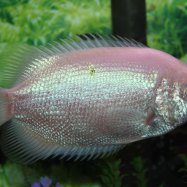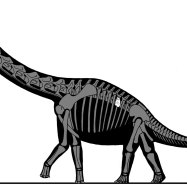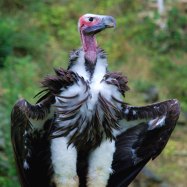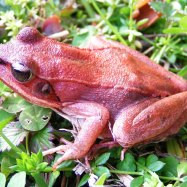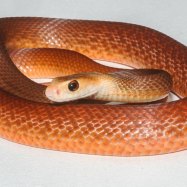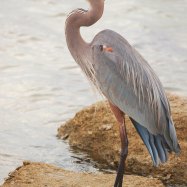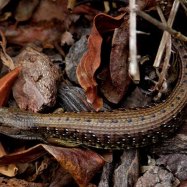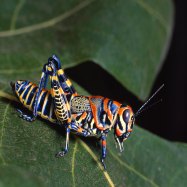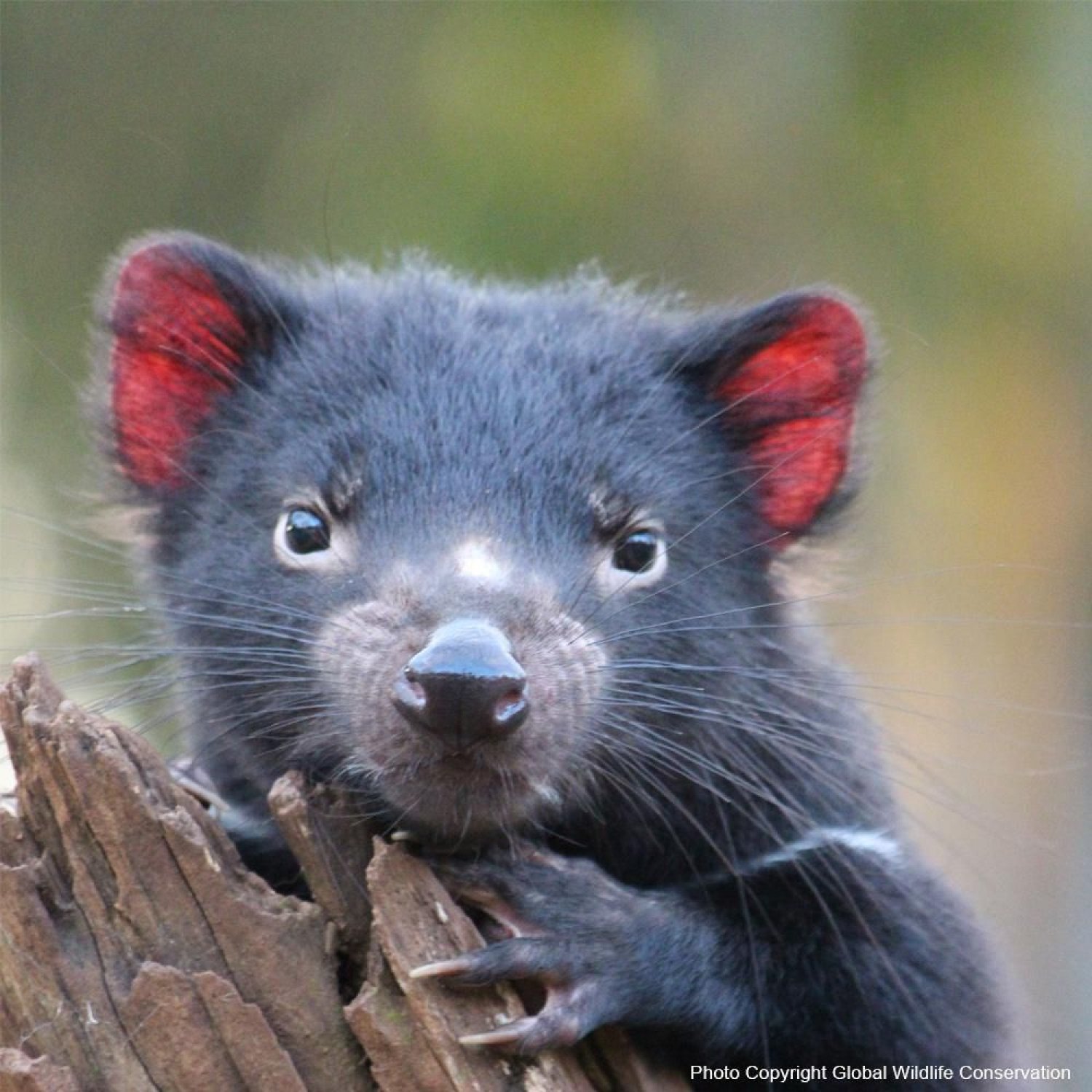
Tasmanian Devil
50-80 cm (20-31 inches)
Tasmanian Devils are unique creatures found in Tasmania, Australia. They are known for their small size of 50-80 cm but have a strong bite force compared to their body shape. They are part of the Dasyuridae family and play a vital role in controlling the local ecosystem. Despite their carnivorous nature, they are considered endangered due to a contagious facial tumor disease. #TasmanianDevil #Wildlife #EndangeredSpecies
Animal Details Summary:
Common Name: Tasmanian Devil
Kingdom: Animalia
Habitat: Forest, woodland, coastal scrub, and agricultural areas
The Fierce and Fascinating Tasmanian Devil: A Symbol of Australia's Wild Nature
Nestled in the remote and rugged island of Tasmania, just south of mainland Australia, roams a creature that has long captured the imaginations of many. With its fierce and ferocious demeanor, the Tasmanian Devil is not only one of the most iconic animals in the world but also one of the most unique mammals found in the wild. Despite its small size and short lifespan, this animal has become an integral part of Australia's rich cultural and environmental heritage.The Name and Scientific Classification
Known as Sarcophilus harrisii in the scientific world, this marsupial is most commonly referred to as the Tasmanian Devil Tasmanian Devil. It belongs to the animal kingdom, scientifically known as Animalia, which encompasses all multi-cellular, eukaryotic organisms. Specifically, it falls under the phylum Chordata, which includes all animals with a notochord or backbone. It is a member of the class Mammalia, making it a mammal, and the order Dasyuromorphia, a type of marsupials native to Australia and New Guinea. Within this order, it belongs to the family Dasyuridae, commonly known as the carnivorous marsupials.Habitat and Geographic Distribution
The Tasmanian Devil can primarily be found in the island state of Tasmania, located off the southern coast of Australia. It is estimated that approximately 25,000 Tasmanian Devils currently roam the wilds of this rugged and isolated region. They can also be found in areas with a similar climate and landscape, such as coastal scrub, forest, and woodland, as well as in some agricultural areas.For centuries, Tasmania was cut off from the mainland, allowing its unique and diverse flora and fauna to evolve without outside influences. This has resulted in a diverse range of habitats, making it a perfect home for a wide variety of species, including the Tasmanian Devil Titanoboa.
Appearance and Adaptations
The Tasmanian Devil is a medium-sized and stocky animal, with a compact body shape that allows it to maneuver easily through dense vegetation. It has a short and thick tail, a strong jaw with powerful teeth, and sharp claws that it uses for digging and climbing.One of the most distinct features of the Tasmanian Devil is its body coloration. Its fur is predominantly black, with white markings on their chest, giving them a unique and dramatic appearance. This coloration serves as a protective camouflage, allowing them to hide in the shadows of the dense Tasmanian forests while hunting at night.
Feeding Behavior and Diet
As a carnivorous animal, the Tasmanian Devil relies on eating meat for survival. Its diet primarily consists of small animals such as birds, reptiles, amphibians, and other marsupials, such as wallabies and possums. They are also opportunistic scavengers and will feed on carcasses of larger animals, including sheep and kangaroos.The Tasmanian Devil has developed a powerful jaw and strong neck muscles, allowing it to take down prey larger than its own size. It fiercely guards its food and is known to emit loud and ferocious snarls, screams, and growls while feeding, which has contributed to its fearsome reputation.
Life Expectancy
On average, the Tasmanian Devil has a lifespan of six years in the wild. However, they have been known to live up to eight years in captivity. Despite their short lifespan, they reach reproductive maturity at the age of two, with females producing up to 50 offspring in their lifetime.The Tasmanian Devil in Australian Culture
The Tasmanian Devil has long been a symbol of Australia's wild and rugged nature, with its reputation as a fierce and ferocious predator captivating the imaginations of people worldwide.In Aboriginal mythology, the Tasmanian Devil is believed to be a trickster figure, often outsmarting other animals with its cunning ways. Its name, "Dreamtime," reflects its mischievous and playful nature, making it not only a feared but also a beloved figure in indigenous culture.
Today, the Tasmanian Devil is featured on the emblem of the Australian island state, Tasmania, and is also the mascot of the country's national rugby team. Its image is often used in popular media and is one of the most recognized Australian animals globally.
The Threat of Extinction
While the Tasmanian Devil has held a significant place in Australia's cultural and environmental landscape, it now faces the looming threat of extinction. In the mid-1990s, a contagious facial tumor disease, known as Devil Facial Tumour Disease (DFTD), was discovered in the wild Tasmanian population, leading to a significant decline in their numbers.The disease is highly contagious and transmitted through bites while feeding, resulting in rapid tumor growth in their face and neck, making it difficult for them to eat and ultimately leading to death. As a result, the Tasmanian Devil population has declined by more than 90%, and they are now considered an endangered species.
Conservation Efforts
Recognizing the significant decline of the Tasmanian Devil, the Tasmanian government, in partnership with wildlife organizations, launched a comprehensive conservation program in 2005. The program aims to increase public awareness, provide funding for research, and implement conservation strategies such as captive breeding and the establishment of insurance populations.Additionally, the Tasmanian Devil is listed as a protected species, and it is illegal to harm, capture or kill them in Tasmania. Under the conservation program, diseased animals are also captured and treated, with some successfully released back into the wild.
The Future of the Tasmanian Devil
Despite the sobering reality of their declining population, there is still hope for the Tasmanian Devil. With the implementation of conservation efforts, there has been a steady increase in the number of devils with low levels of DFTD. This offers some promise for the species' survival, with the ultimate goal being to have a healthy population of Tasmanian Devils thriving in the wild once again.Scientists and researchers continue to study the disease and its transmission, with the hope of finding a cure or a vaccine to stop its spread. The commitment and dedication towards the conservation of this iconic animal reflect Australia's determination to preserve and protect its unique wildlife for future generations.
In Conclusion
The Tasmanian Devil is a vital and beloved symbol of Australia's wild and untamed nature, with its fierce and ferocious reputation capturing hearts and minds worldwide. Despite facing adversity and the threat of extinction, this creature continues to thrive in its native land, thanks to various conservation efforts.As we continue to push for the preservation of endangered species, the Tasmanian Devil remains a reminder of the delicate balance between man and nature, and the impact we have on the world around us. Through cooperation and determination, we can protect and preserve the beautiful and unique creatures that call our planet home.

Tasmanian Devil
Animal Details Tasmanian Devil - Scientific Name: Sarcophilus harrisii
- Category: Animals T
- Scientific Name: Sarcophilus harrisii
- Common Name: Tasmanian Devil
- Kingdom: Animalia
- Phylum: Chordata
- Class: Mammalia
- Order: Dasyuromorphia
- Family: Dasyuridae
- Habitat: Forest, woodland, coastal scrub, and agricultural areas
- Feeding Method: Carnivorous
- Geographical Distribution: Tasmania, Australia
- Country of Origin: Australia
- Location: Tasmania
- Animal Coloration: Black with white markings on the chest
- Body Shape: Medium-sized and stocky
- Length: 50-80 cm (20-31 inches)
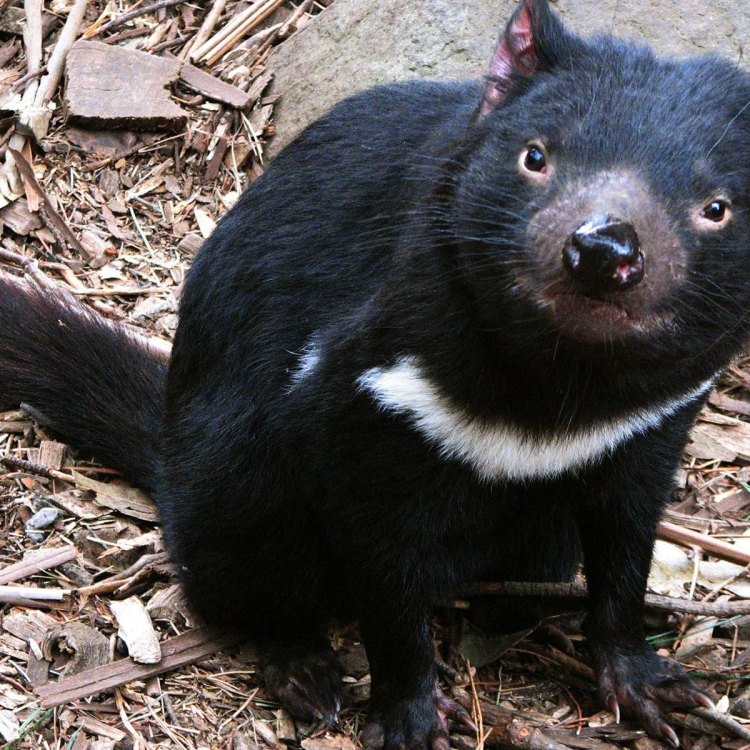
Tasmanian Devil
- Adult Size: Weight: 6-12 kg (13-26 lbs)
- Average Lifespan: 3-5 years in the wild, up to 8 years in captivity
- Reproduction: Sexual
- Reproductive Behavior: Polygamous
- Sound or Call: Loud screeching and growling noises
- Migration Pattern: Non-migratory
- Social Groups: Solitary, but can form small groups
- Behavior: Nocturnal, scavenges for food, known for its aggressive behavior
- Threats: Devil Facial Tumor Disease (DFTD), habitat loss, roadkill
- Conservation Status: Endangered
- Impact on Ecosystem: Important scavengers, help control populations of carrion
- Human Use: Tourism, research
- Distinctive Features: Large head, powerful jaws, dark coloration, strong odor
- Interesting Facts: The Tasmanian Devil is the largest carnivorous marsupial in the world. They have a unique reproductive process known as embryonic diapause where the fertilized egg can pause its development until conditions are favorable for the young to survive. They have a strong and distinctive odor and their vocalizations can be quite loud and eerie.
- Predator: Humans, large birds of prey
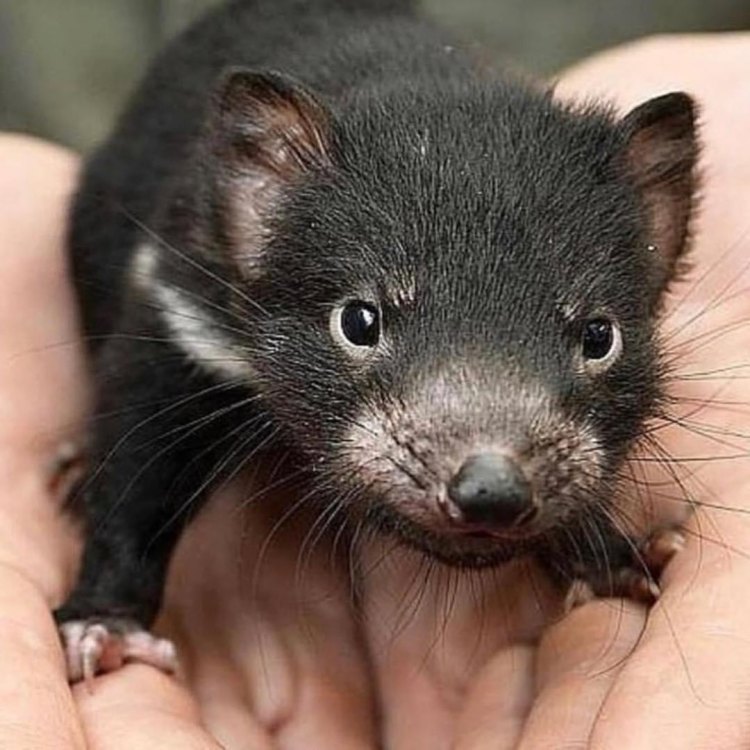
Sarcophilus harrisii
The Wild and Mysterious World of the Tasmanian Devil
Deep in the wild and untamed wilderness of Tasmania, there is a creature so unique, so diverse, and so fascinating that it has captured the imaginations of scientists, conservationists, and tourists alike. With its large head, powerful jaws, and strong odor, the Tasmanian Devil is a symbol of the rugged beauty and mystery of the Australian island. As the largest carnivorous marsupial in the world, these creatures have a special place in the ecosystem of Tasmania and a crucial role to play.Let's take a closer look at this intriguing species and discover what sets them apart from other animals PeaceOfAnimals.Com.
The Basics: Size, Lifespan, and Reproduction
Adult Tasmanian Devils typically weigh between 6-12 kg (13-26 lbs), making them fairly small in comparison to other wild animals. However, what they lack in size, they make up for in strength and ferocity. With powerful jaws and sharp teeth, they are formidable hunters and scavengers.In the wild, Tasmanian Devils have an average lifespan of 3-5 years, but in captivity, they can live up to 8 years. This shorter lifespan in the wild is due to several factors, including the threat of Devil Facial Tumor Disease (DFTD), habitat loss, and being hit by cars on the road. These short lifespans also contribute to their endangered status.
Like most marsupials, Tasmanian Devils reproduce sexually. However, their unique process of embryonic diapause sets them apart from other animals. When a female Tasmanian Devil becomes pregnant, the fertilized egg can delay its development until the external conditions are favorable for the young to survive Treeing Walker Coonhound. This allows the female to give birth and raise her young when food sources are more abundant.
Behavior and Social Structure
Tasmanian Devils are known for their aggressive behavior, and their loud screeching and growling noises are unmistakable. They are solitary creatures, but they can sometimes form small groups when food is plentiful. They are also nocturnal, meaning they are most active at night, which is when you are most likely to hear their eerie calls echoing through the Tasmanian wilderness.Their behavior is also shaped by their role as scavengers. Tasmanian Devils are important scavengers in their ecosystem, feeding on carrion and keeping populations of dead animals in check. This crucial role makes them a vital part of the Tasmanian ecosystem.
Threats and Conservation Efforts
One of the biggest threats facing Tasmanian Devils is Devil Facial Tumor Disease (DFTD). This disease is a contagious cancer that is transmitted through biting and can be fatal. DFTD has had a devastating impact on the Tasmanian Devil population, causing a significant decline in numbers.Habitat loss due to human development and roadkill are also major threats to Tasmanian Devils. As more roads are built, these animals are increasingly at risk of being hit by cars, which can have a significant impact on their already dwindling population.
In response to these threats, extensive conservation efforts are underway. The Tasmanian Devil is listed as an endangered species, and many organizations are working tirelessly to protect and preserve their habitat. There are also breeding programs in place to ensure the survival of the species and help boost their numbers.
Human Use and Impact
Aside from being a popular tourist attraction, Tasmanian Devils also play a critical role in research. Scientists study their behavior, reproductive processes, and their role in the ecosystem to better understand and protect them.In addition, Tasmanian Devils have also been used to promote tourism in Tasmania. Visitors can observe them in their natural habitat at wildlife parks, giving people a chance to learn about these fascinating creatures up close.
Distinctive Features and Interesting Facts
One of the most notable features of the Tasmanian Devil is their strong odor. This unique smell is used for communication and is also a way to mark their territory. This odor has often been described as unpleasant, giving them a bad reputation, but it is an integral part of their biology.Their vocalizations are also a defining feature of these animals. Their loud screeches and growls can be quite startling, especially at night, and add to their aura of mystery.
Here are a few other interesting facts about the Tasmanian Devil:
- Tasmanian Devils are able to eat almost all parts of an animal, including bones, fur, and feathers.
- They have a jaw strength three times greater than that of a domestic dog.
- Despite their ferocious reputation, Tasmanian Devils are actually quite shy and will usually only attack if provoked.
- They are the only surviving member of the Sarcophilus, or "meat-loving," family.
- Humans and large birds of prey are their only natural predators.
The Ongoing Mystery of the Tasmanian Devil
Although Tasmanian Devils have been studied and observed for many years, there are still many mysteries surrounding these fascinating creatures. Their unique reproductive process, their powerful jaws, and their strong odor all contribute to the air of mystery that surrounds them.As we continue to learn more about these animals and work to protect them, let us also marvel at their resilience and their undeniable importance in the Tasmanian ecosystem. The Tasmanian Devil truly is a creature like no other, and its presence in the wild is a reminder of the untamed beauty and wonder of nature.
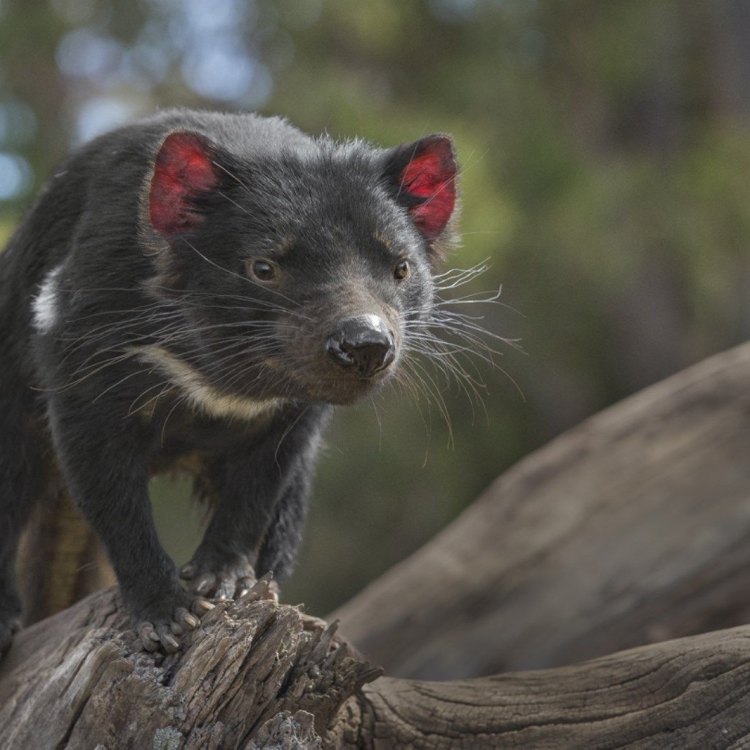
The Fierce and Fascinating Tasmanian Devil: A Symbol of Australia's Wild Nature
Disclaimer: The content provided is for informational purposes only. We cannot guarantee the accuracy of the information on this page 100%. All information provided here may change without prior notice.

